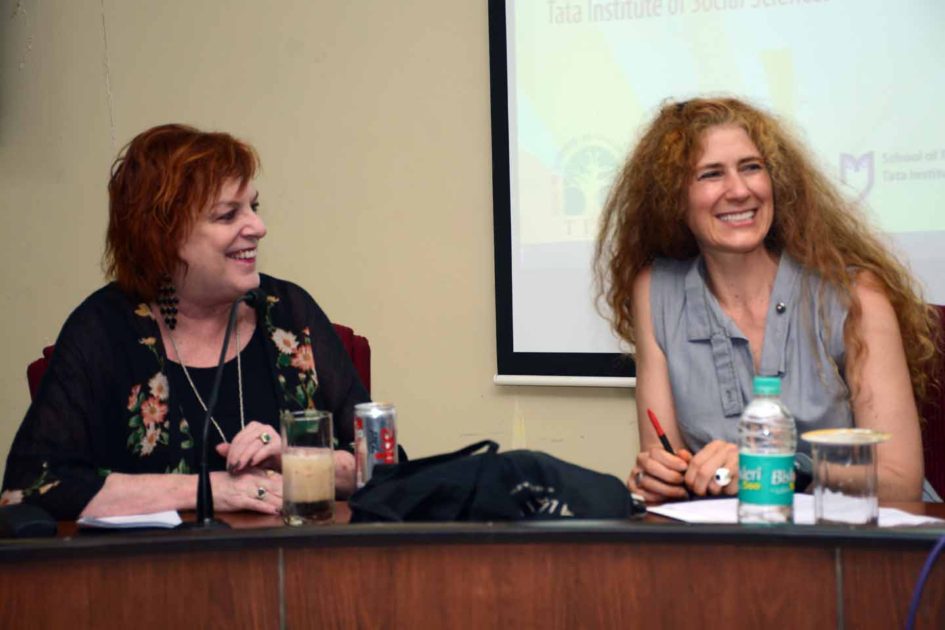Aesthetics and the Political in Contemporary India: Deleuzian Explorations
Deleuze Studies in India Collective (DSIC) Camp and Conference
February 13-17, 2017
Tata Institute of Social Sciences (TISS), Mumbai, India.
Deleuze Studies in India Collective (in association with the Centre for Social Theory, TISS) conducted the five-day Camp and Conference on Aesthetics and the Political in Contemporary India: Deleuzian Explorations to be held at the Tata Institute of Social Sciences (TISS), Mumbai, India from February 13 to 17, 2017. This was the second initiative of Deleuze Studies in India Collective (DSIC) after the highly successful first such conference organized at Manipal University in 2015.
Deleuzian aesthetics has made a radical departure from the established conventions and practices of the Western art by proposing a new theory, pivoted on the notions of “sensation”, “encounter”, “minor”, “affect” and “virtual”. It could be argued that what traditional aesthetics had sundered in its gut zeal to decompose, classify and represent with respect to life in general and art in particular, Deleuze had re-united with a unique battery of differential concepts and intensive visualizations. In this process art becomes political although through an entirely new ‘grammar’ of “expression”.
Kantian aesthetics forms the nodal point of Deleuzian deviation or line of flight. Whereas Kant divided aesthetics into two halves, viz. the theory of sensibility as the form of possible experience and the theory of art as a reflection on real experience, Deleuze synthesized this bifurcation under the single sign of “sensation”. Accordingly, the aim of art is to “produce a sensation” while at the same time it is the works of art that ideally reveal the genetic conditions of sensibility. Art in this sense is creative and differential like life, not abstractive and representational as tradition made it to be.
When art folds into life what epitomises its relation with its objects is “encounter”, which in turn is radical and creative. Significantly what this artistic encounter creates is a rupture with our own habituated forms of thinking and stale cognitive capabilities. Art is something inescapably lived through by the one who experiences it, garnering new sensations and producing new affects. Hence it remakes us into blocs of affects or affective assemblages that never settle in sterile contemplations but thrown into ever new and transversal “becomings”. As the world of the virtual sensible, aesthetics in Deleuze arches over the horizon of singularities of sensible experience which escape arrangements of representation. Without ground, sensible becoming creates subjects in the relative flow of becoming-life – it is the creation of affects from a complex flow of multiplicitous difference. This “becoming-imperceptible” is political insofar it is part of the life force which disrupts all a priori delimitations of sense experience. Such becomings break away from a dominant mode of subjectivity and subjection imposed by society and state. Here art becomes political.
When art folds into life what epitomises its relation with its objects is “encounter”, which in turn is radical and creative. Significantly what this artistic encounter creates is a rupture with our own habituated forms of thinking and stale cognitive capabilities. Art is something inescapably lived through by the one who experiences it, garnering new sensations and producing new affects. Hence it remakes us into blocs of affects or affective assemblages that never settle in sterile contemplations but thrown into ever new and transversal “becomings”. As the world of the virtual sensible, aesthetics in Deleuze arches over the horizon of singularities of sensible experience which escape arrangements of representation. Without ground, sensible becoming creates subjects in the relative flow of becoming-life – it is the creation of affects from a complex flow of multiplicitous difference. This “becoming-imperceptible” is political insofar it is part of the life force which disrupts all a priori delimitations of sense experience. Such becomings break away from a dominant mode of subjectivity and subjection imposed by society and state. Here art becomes political.
Though machine is a central concept in the Deleuzian system, the emphasis is not on its materiality but on the organisation and a set of interrelations between its components. Machines are assemblages and multiplicities which can well be technical machines, imaginary machines, desiring machines, as well as machines inside machines nested like fractals. For Deleuze, central to all machines is an abstract machine. More than machine it is the machinic assemblage that is important. Understood from this perspective, technology and machine have a different relation vis-a-vis society in which they are embedded. Technology becomes an “expression” of a given social form without being its cause or effect – perhaps ‘digital’ captures the quintessential expressive form of technology in our present society.
At first glance a lot of contemporary Indian art elides the traditional/modern divide and the postcolonial, displaying an aesthetic of hybridity and locating itself in a liminal space. In the space of heterogeneous and contingent narratives of globalization in India, aesthetic boundaries are fast dissolving as artworks become increasingly embedded in digital technologies and networks, urban spaces and oppositional social forums. Within such ‘ecologies of sensation’ the Indian aesthetic is taken up with problematics of borders, justice, sexuality, violence, popular culture and sacrality. Deleuzian philosophy becomes crucial in a modern-day analysis of the equally complex multiplicity of Indian art and to grasp the true significance of emerging Indian aesthetics and multiple citizenships.
